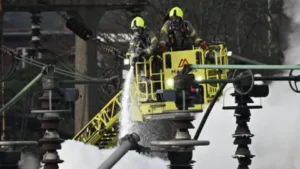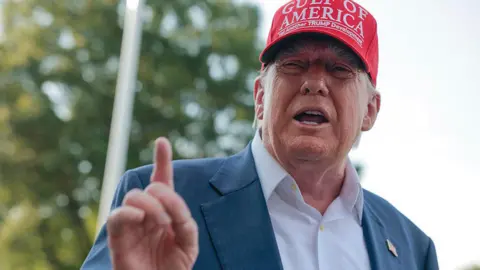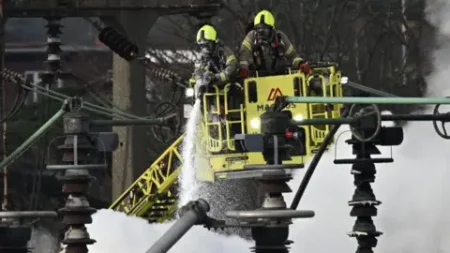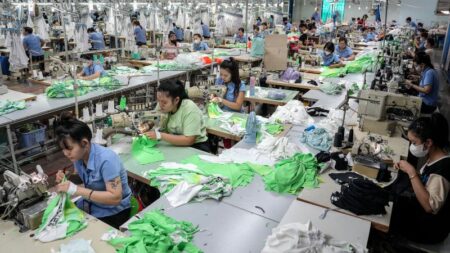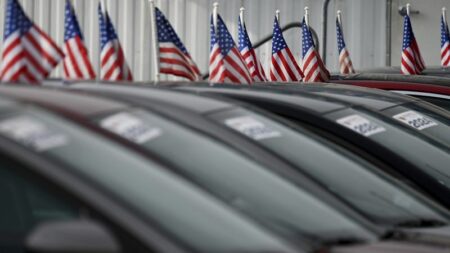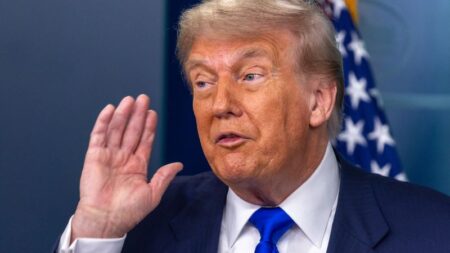In a recent escalation of trade tensions, U.S. President Donald Trump has issued a stern warning to Japan, threatening to impose tariffs as high as 35% if the two nations fail to solidify a trade agreement by an impending deadline. This revelation came through Trump’s remarks on Air Force One, where he expressed skepticism regarding the likelihood of achieving a deal with Japan, stating, “We’ve dealt with Japan. I’m not sure we’re going to make a deal. I doubt it.”
The notion of implementing a tariff between 30% and 35% stands in stark contrast to the previously imposed 24% tariff on Japan as part of Trump’s “Liberation Day,” which occurred on April 2. During that event, the president announced significant import duties on various countries globally, seeking to negotiate more favorable terms for American interests. Following this announcement, tariffs on most trading partners were temporarily reduced to 10% for a span of 90 days, intended to provide nations time to engage in discussions with U.S. officials regarding potential trade agreements.
However, this grace period is set to end on July 9, and Trump has indicated that he does not intend to extend the deadline any further. The president’s words reflect a hardening stance, particularly emphasizing the urgency for Japan to negotiate swiftly or face severe financial penalties that could disrupt economic relations.
In the midst of these developments, Japan’s current export situation has placed it under a 10% tariff, supplemented by a substantial 25% import tax specifically targeting Japanese vehicles and automotive parts. Additionally, steel and aluminium exports are subjected to a hefty 50% tariff, further compounding the trade pressures Japan faces. Against this backdrop, Yoshimasa Hayashi, Japan’s Chief Cabinet Secretary, articulated a firm stance, refusing to make concessions that could adversely affect Japanese farmers as part of any deal with the United States.
Trump’s trade policy and rhetoric have already encountered significant scrutiny, culminating in his social media condemnation of Japan’s reluctance to import U.S. rice, despite Japan grappling with its own rice shortage. He likened Japan’s unwillingness to accept American rice to a broader trend he perceives among countries treating the United States unfavorably in trade agreements. This assertion was disseminated via his Truth Social platform, where he has frequently shared his perspectives on trade matters.
As it stands, while Trump initially envisioned negotiating 90 trade agreements during the temporary pause on tariffs, Japan has yet to reach any agreement, with the only successful deal reported so far being with the United Kingdom. The impending deadline adds pressure to the negotiation dynamics, as many countries grapple with the potential economic ramifications of additional tariffs, which could disrupt existing supply chains critical to both American and Japanese economies.
The scenario continues to evolve, and as deadline approaches, the stakes heighten for both nations. For Japan, successfully navigating Trump’s tariff threats while maintaining domestic agricultural standards presents a significant challenge. Trump’s assertiveness signals a determined drive to reshape trade policies that align closely with his administration’s vision for American economic dominance, underscoring the complex interplay of international trade relationships in today’s global economy. With communication channels remaining open, the hope remains that dialogue can yield resolutions that stave off the threats of escalating tariffs and further economic disruption.



